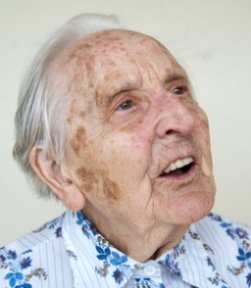What are liver spots on the face? Despite the name, they don’t have anything to do with your liver. Liver spots, also called age spots or solar lentigines, are caused by prolonged exposure to the sun. Prolonged exposure to the sun causes the body to produce large amounts of a pigment called melanin, which can result in the small black or brown spots known as liver spots.
Sometimes the spots are referred to as age spots instead of liver spots because they occur more commonly as people age. Even young people can get them, though, especially if they have very fair skin, have had frequent prolonged exposure to the sun, or frequently use tanning beds.
Why Are Liver Spots on Face Common?
While clothing protects much of the body from excessive exposure to the sun, the face is typically exposed much more. That’s why liver spots are common on the face, as well as on the backs of the hands. They can appear on other parts of the body, though, especially if you frequently sunbathe or use tanning beds.
Are Liver Spots on Face Harmful?
Medically speaking, they are not. They are not cancerous and are not a sign of any health problem. Of course, if you’re not sure if a spot on your skin is a liver spot or something potentially more serious, we recommended seeing a dermatologist for an evaluation.

Even though liver spots are not harmful and do not need to be removed for medical reasons, people often want to get rid of them, especially if they appear on the face or other highly visible areas. According to the American Society for Dermatologic Surgery(1), there are often social and emotional reasons for removing liver spots. For instance, removing the spots may improve self-esteem, relieve self-consciousness, make people feel more comfortable in social situations, and reduce anxiety about their appearance. If you dislike the way your liver spots look, it is worth checking into your options for removing them.
How Are Liver Spots on Face Removed?
There are a number of treatments available for removing liver spots. Medical procedures to remove them are usually performed by dermatologists or plastic surgeons and are usually not covered by health insurance policies since they are not medically necessary but cosmetic in nature.
Be aware that many treatments for liver spots can sometimes cause scarring, which would likely be undesirable on the face. You don’t want to trade liver spots for scars, after all. If you’re considering a procedure that can sometimes cause scarring, talk to your physician about the risk and what you can do to minimize the chance of scars.
Laser resurfacing – Laser resurfacing involves the use of a laser to remove the top layer of skin. The treatment also stimulates the production of collagen, creating more youthful-looking skin. According to the American Society for Dermatologic Surgery, risks associated with laser resurfacing include pain, bleeding swelling, scarring, and infection.
Chemical peels – Chemical peels involve the use of chemicals to remove the top layer of skin. Risks associated with chemical peels include swelling, blisters, scarring, and discoloration of the skin (which may or may not be permanent).
Dermabrasion – Dermabrasion is the surgical sanding away from the top layer of skin. Risks associated with the procedure include pain, swelling, scarring, and infection.
Cryosurgery – Cryosurgery means using liquid nitrogen to freeze the liver spots, causing the darkened spots to peel away. Risks associated with cryosurgery include pain, swelling, scarring, and permanent discoloration of the skin.
Hydroquinone – Hydroquinone is a prescription bleaching cream that causes age spots to fade. Possible side effects include dryness and cracking of the skin, a burning sensation, blistering, discoloration of the skin, and potentially serious allergic reactions. Hydroquinone should not be used by pregnant or breastfeeding women.
Interested in kinder, gentler remedies, not to mention more affordable ones, many people try home remedies for age spots, like lemon juice or raw onion slices. Unfortunately, many of these simply do not work. We will tell you about our favorite treatment for age spots on the face, though, which is much gentler than medical procedures like laser resurfacing and chemical peels.
Our Favorite Age Spots Face Treatment
Our favorite treatment for age spots, especially on sensitive areas like the face, is H-Age Spots Formula. Consisting of homeopathic remedies and natural essential oils from plants, it gently fades the dark spots and evens out skin tone without causing pain or scarring. To learn more and see if H-Age Spots Formula might be right for you, just follow the link.
